Editor’s Note: According to a History of New Orleans Voodoo, “The core belief of New Orleans Voodoo is that one God does not interfere in daily lives, but that spirits do. Connection with these spirits can be obtained through various rituals such as dance, music, chanting, and snakes,” and in this way the mystery associated with New Orleans begins to materialize. However, it is important to know the truth behind these myths in order to honor the history of the city and to adequately move in the right direction in the fight for social and environmental justice. From its history and culture, all the way to its arts and food, the tourism industry in New Orleans has perpetuated a vast array of myths which continue to exploit the city. Yet, while New Orleans is so popular and well known, the question remains: how much of what people know is actually true, and how does this impact the city? Through exploring New Orleans’ Senegalese roots, highlighting its Honduran connections, and uncovering the origins of hip hop, the following articles provide a keen insight into the various ways the tourism industry in New Orleans continues to spread disinformation for monetary gain. This piece on the two sides of Canal Street was originally published on February 12, 2018.
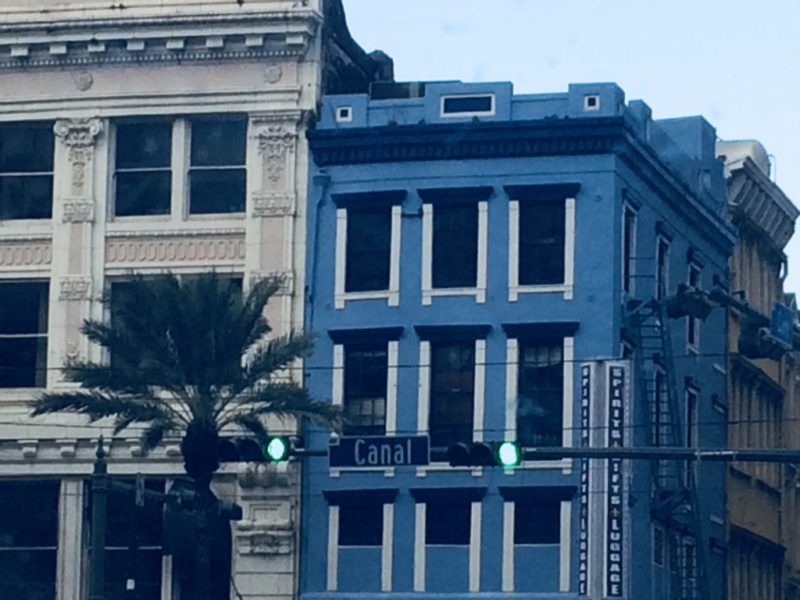
Canal Street, sometimes called “Neutral Ground,” separated the French and American sections of New Orleans.
New Orleans is visited and celebrated for its French heritage, especially in the French Quarter, where tourism abounds. That said, it is by no means a purely French city. That much can easily be seen in the Garden District and Uptown, where everything about the city, including its layout and architecture, drastically changes. These distinctions are present-day evidence of what took place after the Louisiana Purchase and before the Civil War, when an Anglo-American population collided with the old and established Creole French. With its various styles of layout and geography, the city of New Orleans tells a story of two dramatically different cultures and their attempt to coexist.
In 1803, the city of New Orleans was among the most economically important port cities in North America, which is why Thomas Jefferson, the president at the time, was eager to purchase it. With New Orleans came access to the Mississippi River, and with the river came the opportunity to use it for the improvement of American trade. In The Accidental City, Lawrence Powell argues that the president had expressed absolutely no interest in the lands surrounding the city when he sent James Monroe and Robert Livingston to negotiate its purchase in France. As a result, the Purchase has gone down in history as a great bargain because of the vast amounts of land that came with it, but even its vastness cannot be compared with the economic value of the city itself to the United States.
When Americans came to the city to take advantage of the economic opportunities they saw there, they had to confront the French population, a decidedly foreign culture. Some areas of the city, such as the French Quarter, were already old and established sections of town by this point in time with their distinctive balconies that are recognizable today.
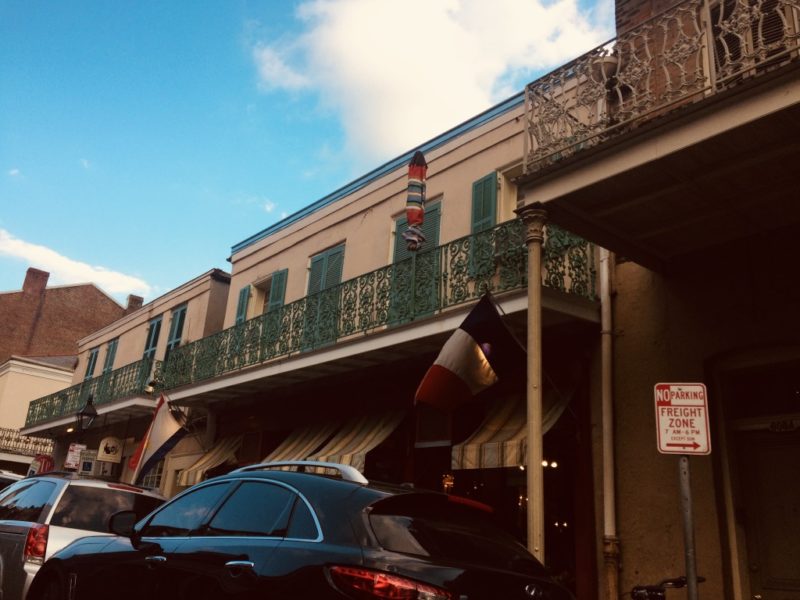
An example of the distinctive French Quarter balconies.
Just like the French Quarter, the French language and culture was the most distinctive aspect of the city, especially to the American newcomers, whose way of life was so different from theirs. The French were used to a legal system in which the law was codified rather than precedent-based. The predominant religion in New Orleans was Catholicism, while Americans were far more likely to be Protestant. These alone were enough to create discord between the peoples.
However, cultural differences extended into American taboos and provoked outright violence at the New Orleanian public balls, an important part of Creole social life. The New Orleanian perception of race involved the inclusion of often mixed-race free black people as a third racial component of their society, a concept thoroughly foreign to Americans. The racial difference between the two societies made such an impact on white Americans that the racially inclusive balls thrown in the years before and after the Louisiana Purchase were often misconstrued into what Kenneth Aslakson’s The “Quadroon-Plaçage” Myth of Antebellum New Orleans describes as a “quadroon-plaçage myth […] shaped by distinctly Anglo-American traditions” in which women of mixed racial origin became the mistresses of wealthy white men whom they met at such events.
Another striking example of the two cultures in a ballroom setting was reported in the Weekly Visitor, Or Ladies’ Miscellany in March of 1804, shortly after the Purchase, when a request for the Waltz to be played at a public ball “being made in French, not being understood by the Americans, but, on the contrary, being interpreted into a menace,” started a fight. Even differences in music preference became heated in the clash of American and French cultures. Socially, the two groups had great difficulty coexisting.
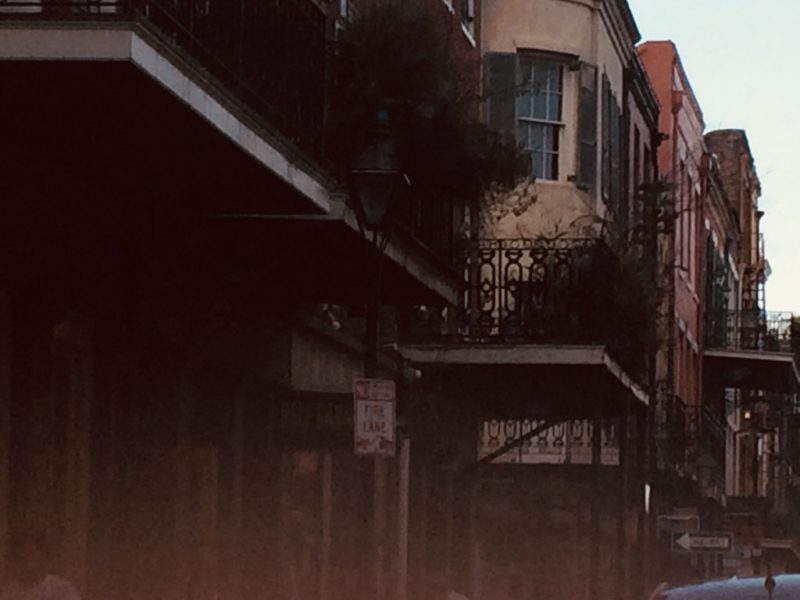
Another example of buildings in the French Quarter.
In addition to social tension, conflict between two forms of government was an obstacle to the French and Americans’ coexistence. According to Powell, In the eyes of the American people, the French inexperience with Democratic government rendered local New Orleanians “royalists, Catholics, [and] hedonists.” New Orleans was in no way an American city when it became part of the United States. Its difficulty adjusting to an American system of government became most evident with the appointment of William Claiborne to the office of Territorial Governor. Originally from Virginia, Claiborne did not fit in well with the locals of New Orleans. Unable to speak French and unfamiliar with the culture, his situation was already far from ideal when a letter was leaked to the national public, revealing what Powell describes as “his skepticism about Louisiana’s readiness for statehood.”
The condescending attitudes of Americans toward Louisiana resulted in an appointed Legislative Council still operating in the Territory even after it would have been appropriate to establish an elected Territorial Legislature. As if that were not enough, appointments were rarely given out to local New Orleanians. According to Powell, The French population was so irked about the situation that a few “noisily declined token appointments” in protest. He goes on to say that political officials even went so far as to take sides in a conflict over whether an American priest should replace Père Antoine in St. Louis Cathedral, which Secretary of State John Madison believed was an issue of the Creoles’ “attachment to France or Spain.” The already-existing tensions between the cultures was only exacerbated by political conflict and the sense that Americans perceived the French population as foreigners.
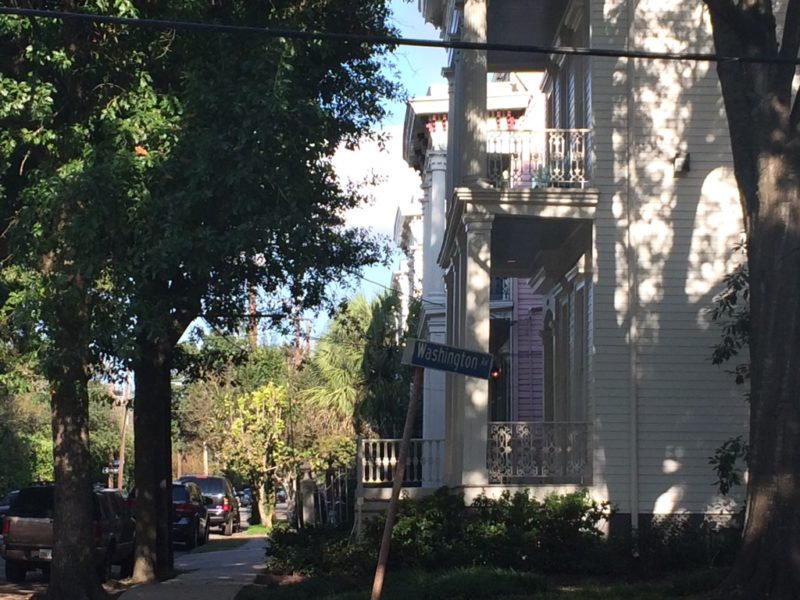
American-style homes in the Garden District
Recognizing the importance of finding a way to live in the same city, Americans made efforts to resolve conflicts. Politically, the establishment of an elected legislature eased tension. A new method of law combining English Common Law and French practices came into being. Powell emphasizes a unique case in which the American basis of precedent was used to uphold New Orleans’s unique racial system in 1810 when Adelle v. Beauregard established the presumed freedom of mixed-race individuals.
Socially, Claiborne drastically improved his popularity by marrying into a Creole family, the Duraldes. Other members of the Duralde family also married influential Americans, such as Henry Clay’s daughter, furthering social alliances between the two groups. Most importantly, Powell emphasizes how the Creoles’ absolute lack of involvement in the problematic Aaron Burr conspiracy immensely improved their reputation with the Americans to such an extent that Claiborne reversed his stance by 1811 and supported Louisiana’s statehood. The turn of events that Claiborne’s new point of view represented ultimately allowed Louisiana to fully become part of the United States.
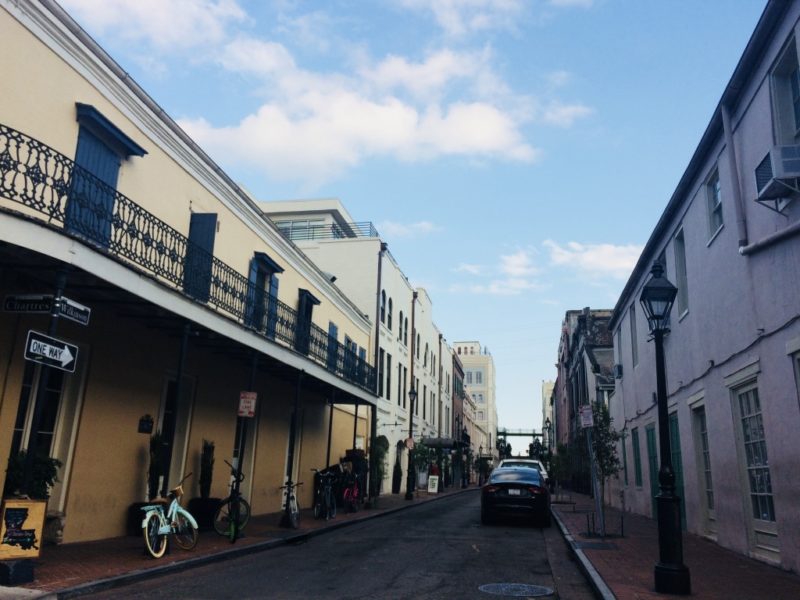
A street in the French Quarter, a visual contrast to the Garden District
Although the Americans and the French found a way to live in the same city, they remained culturally separate from each other, and their tension-filled past still evidenced itself in occasional conflict. Joseph Tregle’s Louisiana in the Age of Jackson points toward one example which occurred in 1823, when the French saw the state legislature’s effort to move the state capital to Baton Rouge as “one more of the insidious plans by which the Americans hoped to enslave all those not part of an Anglo-Saxon tradition.” Although some say the French dramatized the situation, they were correct in that the Americans continued to view them as foreigners for some time.
According to Frederick Starr’s Southern Comfort: The Garden District of New Orleans, Americans referred to themselves as living in a “colony” even into the 1840s. The sense of separation between Creoles and Americans extended even to the impact of the deadly yellow fever, which did not affect those who had survived an epidemic. In Privilege, Prejudice, and the Strangers’ Disease in Nineteenth-Century New Orleans, Jo Ann Carrigan describes how immunity to the disease served as a symbol for Creole authenticity as New Orleanians even into the late 1850s. The two groups may have been able to live in the same city limits, but they always emphasized the cultural differences which set them apart.
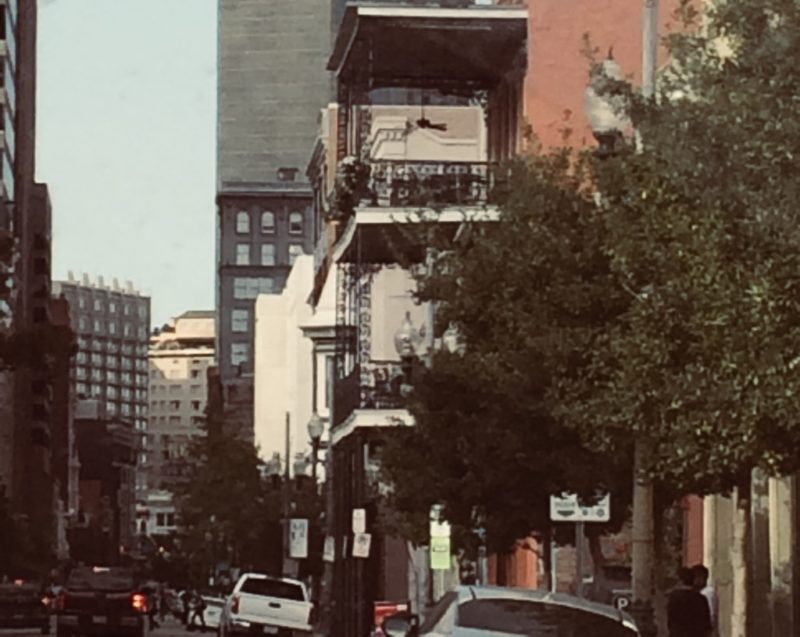
Behind a balcony, the buildings of the Central Business District, formerly the American Section
After decades of distinguishing themselves from the other group, the French and Americans finally decided they no longer wanted to share a city. The campaign of Andrew Jackson, who led American troops to victory in the Battle of New Orleans against Henry Clay, whose Creole relatives were notable New Orleanians, created a charged political atmosphere between the two cultures of the city. In 1836, the different cultures of New Orleans, in Powell’s words, “filed for divorce” and chose to inhabit different regions of the city. Canal Street was the “Neutral Ground.” According to Mary Louise Christovich’s New Orleans Architecture: The American Sector, the French lived on one side of Canal Street in a section called the Faubourg Marigny, while on the other was the Faubourg Ste. Marie, also known as the “American Sector” and today’s Central Business District. In this way, Americans could continue to distinguish themselves from the French population, spreading onto Magazine and Camp Street and into the modern-day Garden District and Uptown.
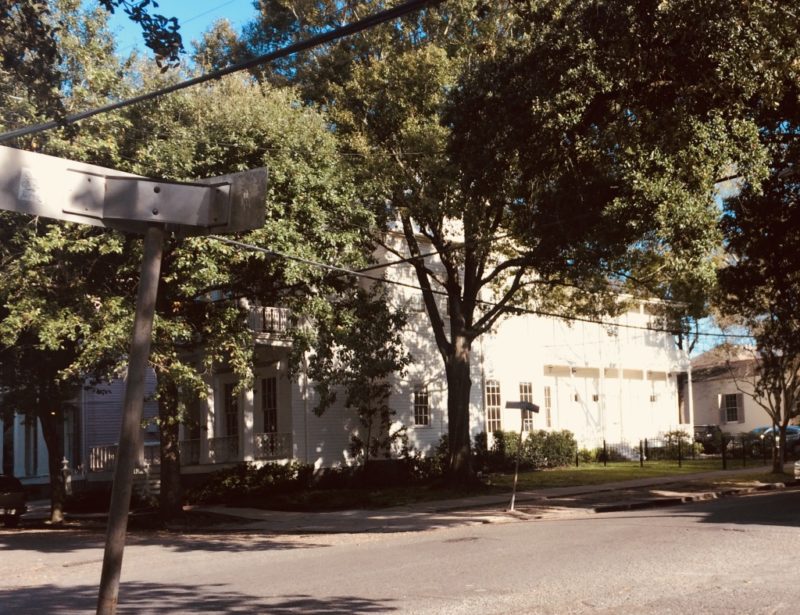
A street-corner of the Garden District
The story of the Creoles and the Americans of New Orleans is told in the city itself. The French Quarter’s beauty and unique architectural attributes, the bustling busyness of Canal Street, and the traditional American-style houses of the Garden District and Uptown exhibit the attributes of the city as it existed two hundred years ago. The differences between the people and their relationships with the city, such as the French sense of belonging and authenticity as well as the Americans’ feeling of being in a foreign place. The roots of New Orleans dig into its French heritage, but it could only become the city it is today through the many cultures that built and supported this city.
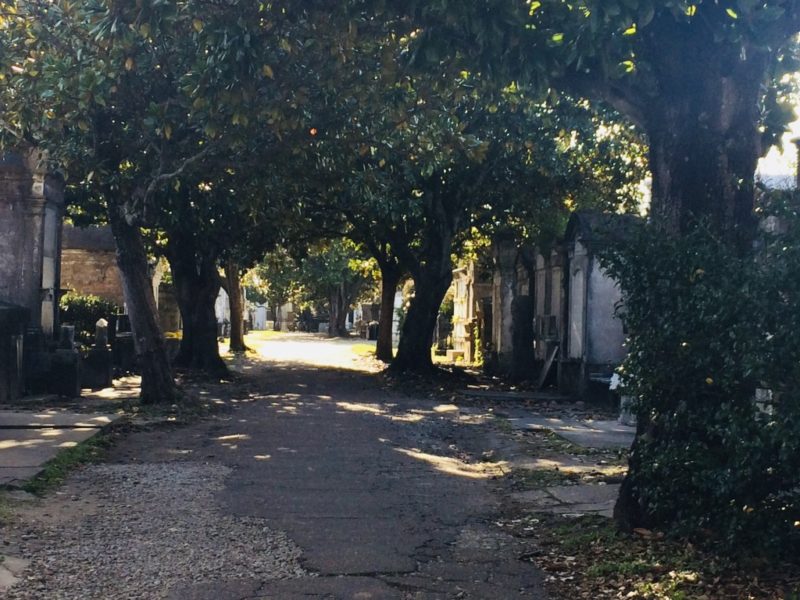
Cemetery in the Garden District
Further Reading
“Article 3 — no Title.” Weekly Visitor, Or Ladies’ Miscellany (1802-1806) 2, no. 76 (Mar 17, 1804): 190. https://search.proquest.com/docview/89435260?accountid=14437
Aslakson, Kenneth. “The “Quadroon-Plaçage” Myth of Antebellum New Orleans: Anglo-American (Mis)interpretations of a French-Caribbean Phenomenon.” Journal Of Social History 45, no. 3 (Spring 2012): 709-734. America: History & Life, EBSCOhost (accessed November 17, 2017).
Carrigan, Jo Ann. “Privilege, Prejudice, and the Strangers’ Disease in Nineteenth-Century New Orleans.” The Journal of Southern History 36, no. 4 (1970): 568-78. doi:10.2307/2206305.
Christovich, Mary Louise. The American Sector (Faubourg St. Mary) : Howard Avenue to Iberville Street, Mississippi River to Claiborne Avenue. Friends of the Cabildo. New Orleans Architecture ; v. 2. New Orleans] : Gretna, La.: Friends of the Cabildo ; Pelican Pub., 1972.
Powell, Lawrence N. The Accidental City. Cambridge, Massachusetts; London, England: Harvard University Press, 2012. http://www.jstor.org/stable/j.ctt2jbxrj.14.
Starr, S. Frederick., Brantley, Robert S, and Brantley, Jan White. Southern Comfort : The Garden District of New Orleans. 1st ed. The Flora Levy Humanities Series. New York: Princeton Architectural Press, 1998.
Tregle, Joseph George. Louisiana in the Age of Jackson : A Clash of Cultures and Personalities. Baton Rouge: Louisiana State University Press, 1999. eBook Collection (EBSCOhost), EBSCOhost (accessed November 11, 2017).
 NOLAbeings
Multimedia artist Claire Bangser created NOLAbeings as a portrait-based story project that marries...
NOLAbeings
Multimedia artist Claire Bangser created NOLAbeings as a portrait-based story project that marries...
 Data corner: Adobe Suite (create a PDF, social media graphic, presentation, edit a photo and video
Data corner is where you go to work with analytics and top tech skills. It takes on everything from PERL and SQL to Canva and Sprout Social.
Data corner: Adobe Suite (create a PDF, social media graphic, presentation, edit a photo and video
Data corner is where you go to work with analytics and top tech skills. It takes on everything from PERL and SQL to Canva and Sprout Social.
